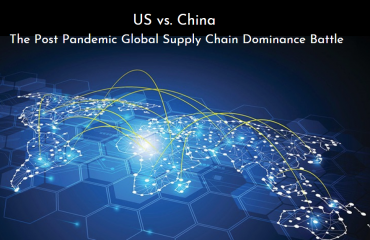With companies now pursuing broadened supply chain strategies, the ability to manage quality in the supply chain has become more challenging.
Supply chain management has a direct impact on the product quality and the overall profitability of the company. Therefore, efficient quality control across the supply chain is vital for maintaining a competitive edge in the market and also to reduce operating costs.
Quality issues can come up at any point in the production process and the supply chain. It is important to identify the quality issues as early as possible. The cost of unsolved quality issues can be upsetting if they are discovered after the product has been introduced in the market. Hence, it is imperative to identify quality issues early in the supply chain to manage quality-related risk and cost.
Quality is the key metric for measuring supply chain effectiveness. Therefore, supply chain management must include measures to improve quality control across the supply chain.
Supply Chain Management Optimization- Measures & Practices to improve quality control
An optimized supply chain looks at the lifecycle of each part of a product holistically
Supply chains consist of many different processes and participants and any inefficiency or error can have a spilling effect on the remaining. Hence, focusing on the early stages of the product lifecycle in the supply chain management is essential since success at this stage can cascade through the rest of the supply chain. Implementing quality control at the initial stages of manufacturing-sourcing raw materials is one of the ways to set a product line up for success. Eliminating sub-standard materials at an early stage is beneficial from supply chain management perspective since it lessens costly shortcomings down the line, and can significantly improve the quality of the average unit produced.
Improving the relationship between a brand and its suppliers
Typically, in a brand-supplier relationship both sides have involvement in decision-making process of the other and they communicate comprehensively to deal with arising issues. Thus, in such case, it becomes easier for brands to train its suppliers in the best quality control techniques for their product range, and to observe whether it is being implemented. Largely, the relationship between a brand and supplier should be supportive and beneficial mutually.
Making supply chain performance visible
With accurate and real-time data extracted into actionable insights, you can make any quality, sustainability, and compliance markers visible to the supply chain partners and stakeholders. Access to these insights can help nurture collaboration, and keep all stakeholders on the same page. Thus ensuring timely and informed decisions can each stage of the supply chain. Among other things, this allows the quality management system to address issues more inclusively with input from all stakeholders.
Rolling out consistent quality and compliance standards
When inspectors and suppliers can work from specifically designed workflows and standardized processes, it becomes much easier to observe adherence to compliance and quality requirements. However, make sure that the quality data is internally consistent. A professional quality management system can come inclusive of a library of templates and checklists, designed by experts in the industry based on best practices, and updated based on the regulatory changes that happen in the designated marketplace. You can use them to set up compliance workflows and quality control.
Additionally, if all your suppliers and inspectors are connected to the same platform, you can roll out updated procedures and standards in just a few clicks and ensure that no part of your supply chain is operating on older specifications.
Establish a clear process for vetting new supply chain partners
It is important to have an accurate picture of each supplier you consider adding to your supply chain network. However, it can be time consuming and expensive to gather data especially if the supplier is located overseas. Similarly, choosing between several suppliers can complicate things. To avoid this, you can implement a standardized process for auditing new suppliers. Various ready-to-use and customizable templates are often provided in quality management software.
Conclusion
Identifying issues as early as possible is the key to improve quality control across the supply chain. To avoid quality issues becoming costly quality incidents, make sure you understand the root cause and ensure supply chain partners understand issues and resolution requirements. Remember better quality control feeds into greater supply chain efficiency.





